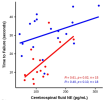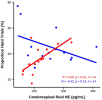Mij
Senior Member (Voting Rights)
Abstract
A 66-year-old man presented with a 9-year history of chronic orthostatic intolerance and recurrent syncope. A review of systems also revealed several other symptoms including dry eyes and mouth, chronic nausea and bloating, constipation, urinary urgency and urge incontinence, and erectile dysfunction. He had no motor, sensory, or cognitive concerns. He took no medications that could cause autonomic dysfunction. His neurologic examination was unremarkable. The tilt table test revealed neurogenic orthostatic hypotension. His plasma norepinephrine level was low. Eventually, a treatable etiology of autonomic failure was identified, and the patient had excellent response to treatment.LINK


